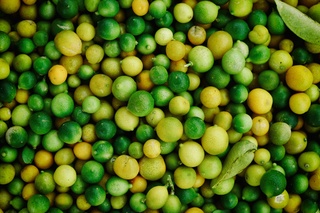What Is CSA Meaning In Firming? CSA Meaning
CSA is a commonly used word to indicate firming, and the word CSA meaning is Community Supported Agriculture.
Today we’re going to learn about a CSA that is regenerative and sustainable.
The market garden is a for-profit business that I own and operate.
It’s a CSA, which stands for Community Supported Agriculture, already you know.
How CSA ( Community Supported Agriculture) Can Be Defined?
You can see from the title down below CSA stands for Community Supported Agriculture.
In a nutshell, it’s a way for you to buy local food directly from a farmer or in the case of my local CSA a group of farmers.
When you sign up for a CSA you purchased a share and become a farm member with your memberships, you get a predetermined quantity of vegetables regularly throughout the growing season.
And for me the number of NGOs I got was determined by the size of share that I registered for every CSA is different.
But my local CSA had three sizes of shares a mini a regular, and a robust and we opted for a regular share and I’ll be honest with you.
The regular is supposed to be enough veggies to feed a family of four for an entire week.
It was way more veggies than my family would actually have because Mauricio and Molina and my dad don’t eat much in the way of vegetables.
- Demi Lovato and Manager Scooter Braun Part Ways
- What Is The Energy Transference? Check The Example of Transfer Energy
- How To Make Your Phone Aesthetic?
- Artemis Launch Time | Check It Here About Artemis Launch Time
- Who Invented Walking? | How Was Invented Walking?
In fact, they probably eat what I eat at one meal in their entire day.
So each CSA is run a little bit differently you can either get handed a box that’s already packed with veggies.
In your case of ours you go in and pick out exactly what you want where you go in and pick out your own veggies is actually called a market share and I guess it’s because it’s more like going to the market.
Well, most people would probably like a market share way better I did tend to gravitate towards the products that I knew pretty well rather than branching out.
So it does have its downsides.
So, how does it work signing up for your local farm share is 100% depends on how the local farm is set up.
For some of them you can actually sign up anytime during the growing season and some of them are super competitive and you have to be signed up by December or January.
To participate in the spring, one thing you should know is that you pay for your full share at the time you sign up and if you miss picking up a week because you’re out of town or you’re sick or something there are no make-up weeks.
How Does It Cost A Community Supported Agriculture?
I can only tell you how much mine cost and our local CSA the regular share was five hundred and seven dollars for 13 weeks.
Starting in June and then they have a whole different share that starts in the fall that runs for nine weeks and that one was three hundred and twenty-four dollars.
And that allows you one market share every week. For that entire time period many CSAs including my own how add-ons that you can also purchase when you register for your farm share for example.
Our CSA had a flower share for an additional one hundred and seventy-six dollars during the summer.
You get one bunch of flowers every week for thirteen weeks, for one hundred and seventy-six dollars that’s pretty outstanding in my book.
So our local CSA also had an egg share where you got a dozen fresh eggs a chicken share where you got a newly butchered chicken a variety of meats.
So like all the meats all meats are just a portion of all the meats Atty shares which is really kind of cool.
Because it’s fresh teas grown with tea leaves and herbs and different mixtures.
You could get a herb share where you choose like from the healing herb pocket or the kitchen herb packet they even had a culture share.
Which is kind of cool it’s a home fermented product made from in-season produce.
So when carrots are plentiful they would have pickled or fermented.
Carrots which if you’ve never had fermented products they’re awesome.
If you like pickles you like fermented products so what happens if you get something in your CSA Sharron you have no clue.
What is this actually I did to myself?
On purpose, because like I said we had a market share and then we got a couple of things there, I was like I don’t know what this.
But I feel compelled to have it.
So we discovered that most CSAs have websites and not only will they show you pictures of each thing but they’ll also link you to some outstanding recipes and recommended uses for particular vegetables.
For me yeah I was never really worried about that because honestly, I’ve never met a veggie, I didn’t like.
I mean seriously not one in fact in the fruits and vegetable family the only thing I don’t like is papaya and I don’t even know why I don’t like papaya.
But I have never liked papaya actually in my CSA.
Some of the more unusual greens or what I had difficulty with because my family is not really about adventurous with their salads, which is super annoying by the way because I make an amazing salad.
And they also don’t like panned cooked greens so much unless they’re and butter and cheese and cream.
So I tended to use though the greens in my green smoothies or hidden in a pureed soup.
Because I make a really really good potato soup, and when I say it’s potato soup it’s like a couple of little potatoes and mostly vegetables but Malina loves it.
I will admit that sometimes she does ask me why her potato soup is green I just tell her that I put green magic in it to make her strong and I’m guessing one of these days she’s gonna wives up to my trickery.
Oh, how can you tell if a CSA is right for your family well the first thing is you absolutely have to enjoy cooking to invest in the CSA because you’re gonna be trying out a lot of new recipes and if you don’t like to cook do not waste your money by getting a CSA, the second thing is that CSAs are actually not a cheaper way to get your veggies at least in this area.
So don’t go in assuming that they are CSA for us is actually significantly more expensive another thing is that if you eat out a lot, you’re probably not gonna get your money’s worth because you’re gonna end up getting rid of a lot of vegetables because they do give you enough veggies for you to have vegetables at every single meal for a week.
Also if you travel a lot it’s probably not a good idea and because for you to get a farm share you will need to pick it up every single week and if you’re out of town during pickup you don’t get it, and finally, another thing to consider is if you’re a meal prepper it could be either good or bad and it mostly depends on the day you pick up from your CSA.
And what day of the week do you meal prep some CSA is only picked up on weeknights and if you do your meal prepping on the weekends that could actually be an issue for you.
So we will be doing a CSA again this year no honestly, I loved it and I will do it again someday because I love the concept of literally farm-to-table or in my case farm to counter and it really did force me and my family to venture out in their veggie choices, but honestly, we have other financial priorities at the moment and shovelling out five hundred bucks for three months of produce really isn’t worth it to me at this point in time but I will tell you that the flower share was worth every single cent having fresh flowers for about twelve dollars a week was amazing.
Why CSAs are Important?
One of the reasons that CSAs are so important is because it is a model of farming that allows the consumer and the farmer to share the risks and rewards of farming. We are in Maybee Michigan, close enough to Toledo, Anna Arbor, and Detroit to have a successful farm business. But it’s far enough away where it feels kinda out in the country.
When we bought the property it came with a couple of our cows. And then since then, we’ve got a couple and we’ve had a few surprise newborns. That one of the main objectives of our sanctuary is to show them how loving they are. If You fed, you know, you felt how loving how they like to lick you. And it’s amazing, they eat only the green stuff and they produce so much valuable compost where they are growing our vegetables and crops.
You Can Get Your Favorite Food From CSA
One person takes care of the cows and he’s also working on an initiative to start an orchard in the backyard. Another person manages the ashram and the farm in general.
The farm works to create a circular relationship between their initiatives. The garden is developing better soil.
The cow sanctuary attracts visitors who want to connect with nature and experience the kindness of cows.
The cows brighten people’s days and provide natural fertilizer all over the property, not just contributing to the garden but to the whole ten and a half acres. Everything here is focused on harmonic and simple living between animals, people, and the land.
I remember the first moment we came to enter the property from the driveway. We had not even seen the house. We saw three cows in our eyesight and we were like, okay, we are getting this one.
They like to be hugged. They like to be scratched. And there’s so much talk about animal therapy doctors where you could practically do the same thing to the cows.
She would sit, I would sit on her belly and she would just hug me with her head, Oh my God and we both sleep, just like that.
I mean, this is the first experience I’m having with a cow and it’s like this. Every time you spend time with them and you feel like wow, such a nice day. It’s such a fruitful and peaceful day and I go to bed every night at 10 pm.
They have a schedule. You gotta feed them at this time, you’re gonna milk them at this time, you gonna go spend time with them at this time. You know, so it’s a very that is integrated into human nature. We have a lot of guests come and go.
In the back, we wanna build a couple of cabins actually, start to allow people to come and interact with the garden.
The size of the farm is ten of half acres and about one acre or a little bit more than one acre is allotted for my market garden. And currently, I’m only utilizing a little more than half of that.
Just growing a diversity of vegetables about 25 varieties. My basil has gotten the most compliments. People love basil and I had an abundance of it. I like the challenge of just working with my environment. Farming requires a lot of improvisation. So my job is dependent a lot on the weather.
I’m trying to pursue a path of regenerative agriculture. Traditionally, the process of vegetable production would be to till up the soil using heavy machinery which releases a ton of carbon emissions into the air and really destroys the long-term sustainability of the soil. What I’m trying to do is called no-till.
And so what this means is creating a minimal disturbance in the soil to encourage biodiversity in the garden. Because essentially everything starts in the soil.
All life on Earth depends on topsoil. Practising regenerative agriculture, not only does it makes my job easier, it’s great for the ecosystem and lowers carbon emissions.
Right now, less than 1% of farms in the United States are organic. You know, that number is increasing every year and I think many years from now, it’ll look a lot different.
While only 1% of American farmland is organic, small farms account for 17% of organic sales and organic food production pays off. Prices for certified organic crops can be up to 35% higher than conventional crops.
Small farmers usually thrive off of direct-to-consumer sales, like at farmer’s markets or roadside stands, and contribute 58% of the nation’s direct-to-consumer sales. The most lucrative crops for a small farm include mushrooms, microgreens, and herbs because they’re fast to grow and take up little space.
There aren’t really strict guidelines or requirements behind starting a small farm or getting into food production.
Other aspects of agriculture, like meat production, dairy are a lot more strict than you need. You know, certain licensing to do that sort of thing. But with vegetables, it’s a lot more laid back.
It’s very important to do market research before investing thousands of dollars in infrastructure and tools.
You know, before you can even think about how to sell vegetables, you have to find out if people in your area want what you’re trying to do. I was very lucky that my community had a desire for CSA (Community Supported Agriculture).
None of this would have been possible if I didn’t have the support of the community here and the people with who I’ve built relationships.
I’m finding it’s really important to be humble and ask questions from those who came before.
I would say that the greatest resource is people. Some of my biggest influences have been Curtis Stone, John Martin Fortier, Bill Mollison.
There’s a lot of literature out there on farming but the best way to learn how to farm is to just jump into it and start growing vegetables because you can plan out your dream farm, you know, and watch every video on YouTube but at the end of the day, the best way to learn is just by doing it. And then you can bring that and show it to people. And you can say this is my product.
My recommendation to somebody starting out would not be to go big, but you start really small. Start with low investments and just show people your product and create an attraction.
You know you don’t necessarily need a $20,000 hoop house. I’ve seen a lot of farms start through fundraising companies, and these are a great source of capital for people starting off.
And having the mood of wanting to pursue something which is sustainable and regenerative makes fundraising so much easier. Because there’s a demand for that in the world right now.
When you’re practising regenerative agriculture, when you have high ideals for what you’re doing, then my experience has been that the money just comes.
If you’re interested in starting your own CSA or Community Supported Agriculture check out the resources on google. They will help you to find everything you need to know about starting a business that nourishes your community.














